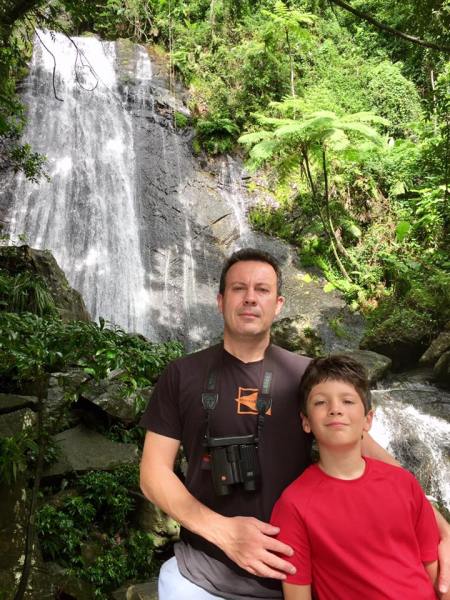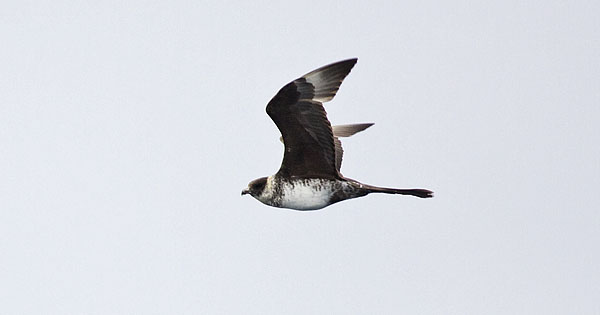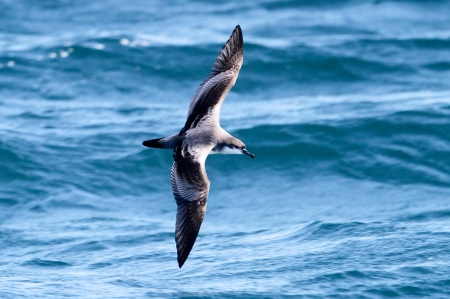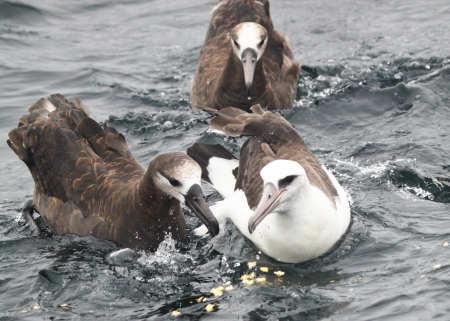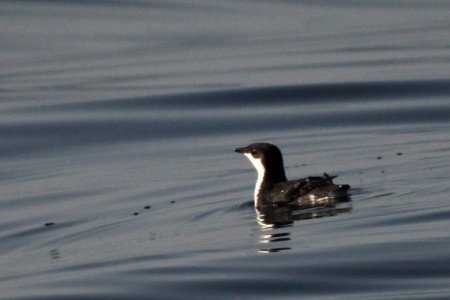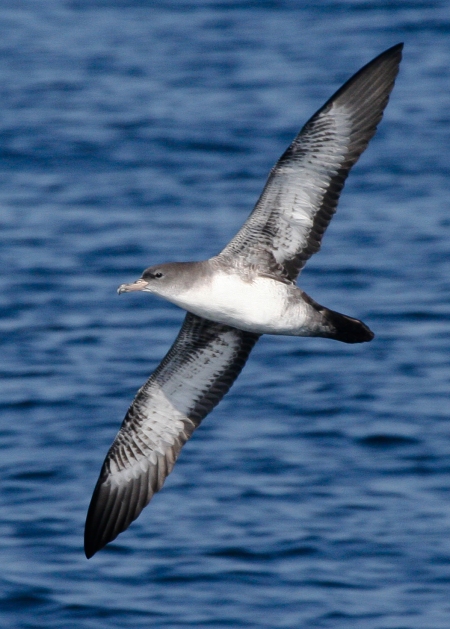
Ingrid soaking up the sunset at Playa Hermosa
Well that’s what it ultimately felt like. The original intention had been to visit Costa Rica to meticulously target several lifers mark Ingrid’s 50th birthday milestone, but a burgeoning global pandemic of COVID-19 had threatened to encroach on our well-laid plans. (click on each image for best resolution)
11th March
We flew out of Newark at 6am, Wednesday 11th March, before any airlines had grounded flights or things had started to get locked down tight, but not before anxiety about the virus in the US had started to soar. I had my “normal” sense of denial in the face of several mouth-watering lifers on offer. (For a non-birder, “normal denial” might border on “reckless denial”, but there was no need to panic just yet, right?). Costa Rica had few coronavirus cases, so it was probably a relatively safe place to be. That’s the mantra I repeated to both of us.
Knowing that my time birding was going to be more constrained than on a typical hardcore birding trip, I had spent the past several weeks meticulously dropping markers into Google Maps and nailing down specific sites for certain key species (often to the actual tree!). My limited time in the field was going to have to be executed with military precision.
Arriving at Newark, I think Ingrid had washed her hands 95 times before we got on our United flight. The flight itself was not full, and after Clorox-wiping down our entire seating areas, I felt suitably safe. I knew in Ingrid’s heightened state of “wash down” I’d be safe by association. Glad one of us was prepared with wipes. And she brought snacks too. I love her.
We touched down under a bright San Jose sky, picked up the rental car and by 11 am we were on our way south-west towards the coast. Our plan was to spend several days at the beach at Playa Hermosa, near Liberia, before spending a few more days in the cloud forest at Arenal, under the shadow of a volcano and ensconced by wonderful cloud forest scenery. We wanted to celebrate Ingrid’s birthday in style. However, faced with a 3.5hr drive it wasn’t too appealing to me to try and get to Guanacaste the first day. I proposed, and she agreed, to break the trip and stay the first night at Cerro Lodge, near Tarcoles. This was a great little spot and being only an hour from San Jose we could still make a day of it and do “stuff”. It would also enable me to do a bit of birding in the mangrove forest and the Tarcoles river area where a couple of key birds were on offer. An afternoon relaxing river boat trip would fill out the rest of the day and Ingrid said she was “In”.
We drove through arid, California-esque rolling hills and agricultural areas before arriving at Cerro. It was already hot, but we found Cerro more expansive than it had been in 2007. The restaurant deck made for a great shady place to take a nice cheese Casado lunch before heading down to our 3:30 scenic River Boat trip from Tarcoles, or “Project Collared Plover” as it was known to me. Our cabin at Cerro was adorable with outside bathroom and shower.

 As we were relaxing, Ingrid, reacting to what sounded like a Pterodactyl outside our room, said, “What on earth is that?” I knew what it was. Walking outside, we enjoyed point blank views of a huge Scarlet Macaw feeding in the trees. It was impressive and she was impressed. I’d forgotten how cool these are when you see them in the wild.
As we were relaxing, Ingrid, reacting to what sounded like a Pterodactyl outside our room, said, “What on earth is that?” I knew what it was. Walking outside, we enjoyed point blank views of a huge Scarlet Macaw feeding in the trees. It was impressive and she was impressed. I’d forgotten how cool these are when you see them in the wild.

Stunning Scarlet Macaw!

Streak-headed Woodcreeper in the rain
Cerro Lodge is cute, clean and a great place to spend time. The guy Frederico, whom I stayed with on our first trip in 2007, is actually still the owner and it was nice to meet him again and see that his hard work had paid off with maintaining a great eco-friendly place. I highly recommend staying here!
We headed down to the river boat launch, a short drive from Cerro, but first we made a quick stop en route. Punching in coordinates, I stopped the car on the dusty road under a single mango tree in the middle of nowhere, to the voice of “You have arrived”. Ingrid said, ”Why are we stopping here?” I said there’s a Black and White Owl roosting in this tree. She looked at me quizzically, as if to say, “How could you possibly know that?”
We got out and started to scour the tree. Within a minute or so, Ingrid shouted, “I’ve got them!”. The best words that birders love to hear! I ran back and she pointed to a pair of close Black and White Owls, snoozing in the afternoon heat. Well done that woman! Kudos to Steve Bird and Sarah Dzielski for GPS intel! Technology is wonderful!

Black and White Owl
Crippling views. Photos taken. Then it was back in the car. Arriving at the boat launch dock, what greeted me made my heart sink! A whole busload of tourists was milling about in the gift area. Any one of them could have been carrying coronavirus. I could see Ingrid reaching for a her “hip flask” of hand-sanitizer before I had even turned the engine off. Admittedly, I think being stuck on a boat in close confinement with 30 other people was now a concern. I knew it would be difficult, with such a full boat, to employ “social-distancing” and also to persuade the captain to target areas where I would have the best chance of connecting with Collared Plover and Mangrove Hummingbird. Most bird tour groups have a dedicated boat specifically for birds, but I was not in that position. At this stage, I was a little (more?) concerned about the former part.
I grabbed a local tour guide and asked, in my charming way (stop it, you know I can be!), if there was any chance of getting on another boat since the other one “looked too full”. In a few minutes he came back and said, this is Barbara, she is training up to be a guide, she’ll take you out. So, we ended up having a boat all to ourselves and they were all too keen to help get me ticks!

Ingrid and me chilling on the Tarcoles River Boat
We had a fabulous and enjoyable afternoon cruising the Tarcoles river. Ingrid looked relaxed and was enjoying the scenery and Barbara regaled us with cool information about the American Crocodiles in the area. Temperature dictates the sex of them when hatching – warmer temperatures produced more young males, while lower temperatures produced more females.

American Crocodile (Ingrid Ducmanis)
Mangrove swallows circled the boat, Turquoise-browed Motmots looked resplendent in the riverside trees and (Mangrove) Common Black Hawk, Yellow-headed and Crested Caracaras sailed overhead. Boat-billed Flycatcher, Red-lored Parrot, Common Tody-Flycatcher and Rufous-naped Wrens were seen, while a close Bare-throated Tiger Heron gave great views.

Turquoise-browed Motmot

Crested Caracara
The boat came to a stop on the inside bend of the river. The Captain nodded that this bank was an area for the plovers. Scouring the dry, muddy area, I was distracted by a sitting Double-striped Thick-knee. Tick! And then, BOOM! Collared Plover. Scouring the river on my previous trip in 2007 and areas in San Blas, Nayarit, Mexico had made this a nemesis bird for years. But, in a short period of time, the long hunt for Collared Plover was done.

I rarely get new shorebird ticks on trips. Collared Plover had eluded me on several trips so it was good to “unblock” this!
Next, we high-tailed it back toward the ocean, and Barbara took us up an intertidal channel full of mangroves and tall trees. Beautiful habitat. They pulled in close, pointing out some roosting Boat-billed Herons, a shoebill-like night-heron that is local and uncommon. Then we drifted slowly, looking and listening. Mangrove Hummingbird is a Costa Rican endemic, and locally uncommon along the coast. They like to feed on flowering white mangrove plants but are hard to find and tough to see. A Prothonotary Warbler popped out and two Plumbeous Kites sailed over. Suddenly, the captain and I both heard a Mangrove Hummingbird calling. We both saw the same movement first, high in a tree, the brief, almost mirage-like apparition of a hummingbird flying away. Motherfather UTV’s!!
Dusk was falling and we headed back to the dock. Under the setting sun the views and scenery of the distant hills, peppered by the sight of Scarlet Macaws flying by, was making a nice first impression on Ingrid. I was happy to get some birding under the belt, but the tour-guide side of me was equally thrilled that she seemed to be having a nice time.

Sunset over the Tarcoles River (Ingrid Ducmanis)
As we drove down the entrance road to Cerro, a nice flock of Lesser Nighthawks showed well.

Lesser Nighthawk
The setting sun over the Pacific made for a beautiful finale to a great first day. We stopped to take a pic and as if on cue a Hoffman’s Woodpecker flew in and landed on the fence post. A perfect avian addition to anchor the scene.

Our first evening at Cerro Lodge ends with a stunning sunset over the Nicoya Peninsula, anchored by a silhouetted Hoffman’s Woodpecker. (Ingrid Ducmanis)
https://ebird.org/checklist/S65749396
12th – Cerro Lodge Entrance Road
The plan today was to be out at 5am, walk the entrance road, come back at 7-ish, grab some breakfast and coffee with Ingrid, then blast off to nearby Carara for some intense birding and nab Royal (another nemesis) Flycatcher and Long-tailed Manakin. That would ultimately not happen. By the time I had gotten back from the walk, the heat had gotten up to 80 degrees by 8am and it made no sense to drive to Carara for what would be a very brief visit given the time and increasing temperature. I opted to relax and bird the Cerro Lodge grounds, coming up empty on any distant Yellow-billed Cotingas from the deck.

Reflections (Ingrid Ducmanis)
My plan got off to a good start with Cinnamon Hummingbird outside the room – a species I’d failed to connect with on two Mexico trips! As is often the case with nemesis birds, subsequently I couldn’t avoid this species over the next few days. Rufous-tailed Hummingbird, and a female Ruby-throated were seen along with Nutting’s and Brown-crested Flycatcher. A steady stream of Tropical Kingbirds paraded up from the coastal floodplain, while the first Streaked Flycatcher was noted. I found a fruiting tree that held a nice assortment of birds: Masked Tityra, Bright-rumped Attila, Brown-crested Flycatcher, Tropical Gnatcatcher and Yellow-throated and Yellow-Green Vireo. Best of all was great looks at a Crane Hawk, a species I had only seen once before – 33 years prior, in Santa Ana, Texas in March 1987. Today’s individual was essentially a lifer given the looks I had at the time of the Texas bird.
Walking back up the road towards the lodge, the car that had passed me earlier was now stopped in the middle of the unpaved track. Then I realized why. Where I had been standing ½ hour ago, was now occupied by a huge fallen tree. And it was completely blocking the road! They were knackered!

Problems! Getting the car up and over the bank on the left was tricky!
So, I gave them a hand, and with a bit of Macgyver-ing, we managed to get the car up on the raised banking. Getting it off the banking was a bit scary, since the low clearance of the car and the grade of the bank to the road were unequal. At one point, with the car at 45 degrees and me pushing it back to stop it rolling over, we managed to get the car back on track – literally! Phew…they would have been there for a while. I took them up on the offer of a ride arriving back just in time to meet Ingrid for coffee before we packed up and headed towards Liberia.
A long drive, in the heat of the afternoon, passed quickly. Ingrid was tasked with one job. The open fields and roadside wires near Bagaces on our way NW was a regular haunt of my next target species – Pearl Kite. This diminutive, classy-looking kite was high on my list. Despite scanning lots of good areas we drew a blank.
We climbed over some hills before dropping down into a sheltered cove of Playa Hermosa and were greeted by the welcoming cerulean ocean that would be a nice respite from the heat. We checked in to our swanky beachside hotel for a couple of days of R&R. It was a great and tranquil spot. Howler monkeys howled, and White-throated Magpie Jays and Red-lored Parrots buzzed around the parking lot.

Dropping down into Playa Panama, Guanacaste. (Ingrid Ducmanis)
The Trancas farm fields were a set of agricultural fields a few miles inland. They were dry – so no hope of any Jabiru and few birds were seen. I was back for a late breakfast with Ingrid and we spent the afternoon relaxing at the beach being serenaded by Great-Tailed Grackles, Social Flycatchers and Kiskadees. A few hours birding in the same area produced a few more birds but nothing of note, a few Common Black Hawks, a Gray Hawk and the “usual suspects”.
That afternoon, after the heat of the day was dying down, I headed back out along the road to the Trancas farm fields. A burning sugarcane field drew my attention.

A sugarcane(?) field controlled burn
Pulling off the road, I scoped the edges of the burn, seeing a good number of vultures but also present were a good number of hawks, quite easily identifiable as adult Swainson’s Hawks. They were picking off insects fleeing the fire. A cool sight I had never seen before. Birding was quiet, but as I neared the edge of town, a Scissor-tailed Flycatcher flew over my head. This was a new bird for the trip.

Little did I know this cracking Scissor-tailed Fly was a herald of more to come in the next few minutes as it was evident a northward movement of these was occurring.
Getting out, two more flew over, and then a third, and a fourth. It was obvious there was a small movement going on. Scanning the field they were dropping into, I was stunned to find it littered with these long-tailed tyrannids. I counted one dead tree with over 50 in it and by nightfall the total in this one field had risen to more than 120.

A field full of Scissor-taileds – nearly 90 in one tree at dusk!
https://ebird.org/checklist/S65734078
13th March – Playa Hermosa, Guanacaste
The dawn plan was driving the road leading inland and birding any suitable areas. There was no “prime” spot, just stopping at any habitat that looked productive. The road Pat O’Donnell recommended was the road leading east from Playa Panama out to the Trancas farm fields.
Birding this road produced Black-headed Trogon, Pale-billed Woodpecker, Squirrel Cuckoo, White-necked Puffbird, Streak-backed Oriole, Chestnut-sided Warbler, Brown-crested Flycatcher amongst others. A small wet marsh on the outskirts of Playa Panama hosted Red-billed Pigeon and Northern Jacana.
https://ebird.org/checklist/S65750228
The small area of water, known as the catfish ponds, allow access to birders. I found a gate and let myself in. Groove-billed Anis and Black-faced Grassquits flitted along the banking. Anhingas, Wood Stork and a bevvy of several hundred Blue-winged Teals and Black-bellied Whistling Ducks filled the ponds but despite a good check the duck diversity was limited to these two species.

Catfish Ponds
Black-necked Stilts were present in small numbers and a flock of 50+ Short-billed Dowitchers packed themselves tightly into the shallow water at the edge of the ponds. When I got out to grab my scope, everything took flight. I noticed a small flock of about 10+ smaller waders that were distant, but identifiable by their chunky shape and clear-cut breast band, as Pectoral Sandpipers. A distinctive “brzzzt” call gave away two Dickcissels. A highlight, and nice surprise for me, was seeing a very distant Yellow-headed Caracara being mobbed by grackles. I was shocked when I got the scope on it to find it wasn’t a caracara but my life Laughing Falcon. Get on that list!!
https://ebird.org/checklist/S65750362
That afternoon, I scoped out some scrub near to the hotel. Lesser Ground Cuckoo was a target bird I really wanted to see, but they are renowned for being uber-skulky. Birding the forest edges around Playa Panama, I had a few usual species but had Rose-throated Becard, Ringed Kingfisher, Cinnamon Hummingbird and a calling Nutting’s Flycatcher. It was while i was looking at these that I suddenly heard the mournful note of a calling Lesser Ground Cuckoo coming from nearby roadside. I ran up the hill to where the bird was calling from, but it was in deep and it looked like it was going to remain hidden. I tried playback and the bird kept calling but didn’t seem to be getting any closer. After about 15 minutes a second bird began to call on the opposite side. I was now “piggy-in-the-middle” between a lifer! A long 25 minutes went by, and with some judicious playback, I finally got both birds to come to the edge of the road. But could I see them. Could I bloody hell as like! It was becoming frustrating and as I bent down to change perspective, I was shocked to come face to face with the Ground Cuckoo sitting 6ft away calling from the bush. Amaaazzzing views!! What a crippler – one of the highlight birds of the trip!

Elusive and skulking, this Lesser Ground Cuckoo finally gave itself up!
https://ebird.org/checklist/S65764830
14th March – Playa Panama and Catfish Farm Pool
The last morning was spent out at the wet ponds. En route I stopped at the area of forest on the outskirts of town adding my lifer Banded Wren, a typical bird of the NW area, several Rufous-tailed Hummingbirds, Brown-capped Flycatcher and Streaked Flycatcher.
https://ebird.org/checklist/S65783955
Driving east past the Trancas farm fields, a lone raptor perched in a distant tree proved to be my only Zone-tailed Hawk of the trip. Similar species were seen at The Catfish poinds, and also present along with Summer Tanager, Black-throated trogon, Least Flycatcher, Laughing Falcon, Dickcissel, Turquoise-browed motmot were the usual two species of ducks! A distant Roadside Hawk circled over the fields but little else new was noted.
https://ebird.org/checklist/S65794170
Again, most of the day was spent relaxing and enjoying the peace and quiet of the hotel with Brown Booby and Magnificent Frigatebirds patrolling the ocean.

Ingrid finally relaxing in her element.
On returning to the hotel, several tiny Long-nosed Sac-winged Bats were found roosting on the tree by the reception desk – not sure of the species but they were only a few inches long!

Bats!
15th March – Playa Panama
Back for a late breakfast, we packed up and made the long drive to Arenal. The first part of the trip gave Ingrid her “one job” back, but despite a false alarm posed by a Roadside hawk, we struck out again on Pearl Kite!!
The drive took us through rolling hills and some nice scenery before we climbed higher into the foothills on the west side of Lake Arenal. At this point, google maps advised us to take a left onto an unpaved road. A small sedan had gone ahead of us, but the route seemed wrong. Double-checking two apps, it seemed to be accurate. The main road continued like the curve of a horseshoe and this “short-cut” allowed us to cut off that loop. That’s why it was sending us that way. OK. That made sense (only to me). Let’s do this.
I put the car in gear and continued on, to which Ingrid anxiously questioned,“Whoa…what are you doing?”
She seemed to think it would be best to take the longer detour on a good road. The road was unpaved, with the camber dropping off sharply into small ditches on each side, but perfectly fine (In MY estimation). We seemed to be at a literal crossroads of disagreement. I said, “It’ll be fine”.
I took our dinky little Hyundai, that had no torque whatsoever, onwards along the pock-marked gravel road. We passed isolated small hamlets and chickens as we climbed higher into what seemed the middle of nowhere. I could sense Ingrid’s concern but even though I was deep in “birder driving” mentality, I considered my passenger, and offered, “We can turn around if you want? How far do we have left to go?”
“I don’t know. I can’t tell on the map”, she retorted. We were halfway there, so I convinced her it was best to carry on. My “You should have been on some of the roads I’ve taken rental cars up in my birding trips” line didn’t reassure her too much!
Up, down and around we went – both in total silence . The small sedan in front of us, pulled over to the right on a steep incline but not quite far enough, making me move over to the left as much as I could so I could just squeak by on the left. As I did, I felt both my left wheels slide into the shale on the edge of the road and I felt the cars grip loosen and shift subtly towards the ditch. I was already in second because of the steep grade, so I eased gently on the accelerator to avoid scattering all the loose shale and continued on past him and upwards. Phew!
I had gone “all-in” with my “It’s fine, the road is not bad!” so I couldn’t back down now. The road got really pot-holey at one point, and the over-exaggerated sound of a big rock smashing into the bottom of the car made even me wince a bit. Then, there was that wonderful sight of the paved road rising up to meet us. Gazing straight ahead, with a “I’m right” smile on my face, I said, “See, I told you, we’d be fine…well, maybe except for that one part back there. I really thought we were going to get stuck in that ditch! That was a bit scary.”
The road opened up to give amazing views of Lake Arenal.

Looking east over Lake Arenal. (Ingrid Ducmanis)
We arrived, without further incident at Arenal in the late afternoon. Brown Jays lined the road and a nice female Great Currasow spotted by Ingrid was only my second, but the best ever views. It had gotten a bit misty and a quick stop at the bridge before the lodge produced a first of the trip Black Phoebe but not the Fasciated Tiger Heron often found here.
Arenal was stunning and impressive. We were going to have a good time here. Due to COVID-19 many cancellations had ensued, and we were given the chance to upgrade from a standard room to the Smithsonian Room, which we did. One whole side of the room was glass that looked out over lush cloud forest with uninterrupted views of the cloud-topped, Arenal volcano. Crowned Woodnymphs fed on the Coral flowers outside our room and then a family party of White-nosed Coatis surrounded us and began digging for ants.

Ingrid – happy with the view from the room!

Julian – also quite happy with the view from the room. (Ingrid Ducmanis)

White-nosed Coati – our garden pals
We were floored by the beauty of this place and I was happy that both Ingrid would get to celebrate her 50th birthday here.
We changed and headed up to the restaurant to partake in the happy hour. A group of Montezuma’s Oropendolas along with a couple of Green Honeycreepers and a male Great Currasow held court at the feeders.

Ingrid’s favorite – Green Honeycreeper

Montezuma’s Oropendola
We stood in silence, cocktails in hand, looking south towards the coast. As the sun set behind a glistening Lake Arenal, the clouds phased from shades of yellow, into mauve and purple. The vista was vast and spectacular, and we stood and watched in silence as the sun’s last rays set over the Pacific.

The expansive view from the Lodge deck. (Ingrid Ducmanis)

A stunning finale to the first day (Ingrid Ducmanis)
16th March- Arenal Observatory Lodge
Happy 50th Birthday Ingrid!!! Up early at 5:30 am and off down the waterfall trail. I thoughtfully placed a card by her phone, knowing she would wake up in her own time, but without me and I wanted the day to start of somewhat special.
It was a bit overcast and the air was filled with light, intermittent showers. The tree outside the reception was flowering and several birds were coming in and out. Summer Tanager, Stripe-breasted Flycatcher, Green and Red-legged Honeycreepers and Scarlet-rumped Tanagers all showed well.

Julian on the Spider bridge at Arenal. Ready to do some ticking! (Ingrid Ducmanis)
The gardens on the way were a prime site for Black-crested Coquette – one of my chief “must see” birds. I lingered here, distracted by the dogfighting of several hummingbirds, that included Violet-Headed, Rufous-tailed, Bronze-tailed Plumeleteer, Scaly-breasted, Green Thorntail, White-necked Jacobin, Blue-throated Goldentail and my only Brown Violetear of the trip.

The tiny Violet-headed Hummingbird
After 30 minutes, there it was. Black-crested Coquette, feeding in its characteristic “slow and smooth” hovering. What amazing birds. A female came in briefly, but despite nice views, they were hard to photograph. A quick walk around the Saino trail produced a staked out Great Potoo, only my second ever.

The amazing-its-real Black-crested Coquette
With that under the belt, I carried onwards to the waterfall trail. The viewing was difficult – dark cloud forest, thick tangles all made for dark silhouettes flitting back and forth. A small wave of birds was evident, the buzzy sounds of tanagers rocketing up the slope, wrens singing, but nothing was showing well. Then, three Russet Ant-shrikes, Buff-throated Foliage Gleaner, Spotted Woodcreeper, several Carmisol’s Tanagers, Streak-crowned Ant Vireo and then, flitting about in the leaf litter, was the unmistakable blue orbital ring of a Song Wren! Excellent.

Another of Ingrid’s amazing flower shots-reminds me of a Phoenix rising up. (Ingrid Ducmanis)

Ingrid – doing her thang!
I spent the rest of the day birding on and off, notching up Rufous Motmot, my first Golden-winged Warbler in a decade, Chestnut-sided Warbler, Slaty-tailed Trogon, Black-cheeked Woodpecker, White-crowned Parrot, Stripe-breasted Wren, and Pale-vented Pigeon. I again paid a visit to the Waterfall trail again in the afternoon, but it was rather quiet except for Golden Hooded, Emerald and Bay-headed Tanagers feeding in a flowering tree and a brief, calling Collared Trogon. Wedge-billed Woodcreeper and Slaty-capped Flycatcher and a nice look at a posse of Spider Monkeys with baby in tow rounded out the day.

Nice looks at a Spider Monkey troupe.
On the way back, a small pod of White-collared Swifts rocketed over and a small warbler in the pines by the reception turned out to be a female Cape May Warbler – a species scarce at Arenal.
We had another great dinner at the restaurant to celebrate Ingrid’s 50th birthday, again under a beautiful sunset and under the shadow of Arenal volcano.

Birthday dinner with my lovely lady at Arenal!
https://ebird.org/checklist/S65888641
17th March – Arenal
The last morning! I was up again early to make the most of it. A dreary day made for a lot of silhouettes skulking in the trees and the distant calling of the impossible-to-see Thicket Antpitta. Buff-rumped Warblers, Golden-crowned Warblers and as lone Louisana Waterthrush flitted along in the gloom on the path ahead of me. Keel-billed and Yellow-throated Toucans and Hepatic Tanagers were seen. Black-crested Coquette showed well and overall it was a quiet morning. A leisurely breakfast ensued, and we packed our gear, opting to take advantage of a late checkout. During this time, I noticed some activity in the trees below our room. Orange-bellied Trogon, Least Flycatcher, Green Hermit, Gartered Trogon, Piratic Flycatcher, Sulphur-bellied Flycatcher, Rufous Mourner, Lesser Greenlet, Tawny-crowned Euphonia, Buff-throated Saltator, Band-backed Wren, Great Currasow and a few Golden-hooded Tanagers were evident but quickly and frustratingly moved away and out of view.
At about 11am, I asked Ingrid if she’d take a walk with me along the trails. This proved a good move. I asked an older couple if there was “owt about?” expecting to be told “nothing unusual”, they responded in an animated fashion, “Oh..yes! We just had a tremendous experience with some birds at the ant swarm down the trail!” What the bloody what???!!! Ant swarm??!!! Panicked, I asked which way and how long ago. She replied, “Oh, only about 5 minutes ago”.
I basically dragged Ingrid by the hand in the direction, and within a minute we came across a “beehive” of ants, with attending Bi-colored Antbirds basically feeding on the path in full view. Spotted Antbirds appeared quickly, but I knew this was the chance for the big one – the one that had eluded me on previous trips. And then, almost as I thought it, an Ocellated Antbird, complete with bright blue facial skin and brown back, was filling my bins!! Yess!

Bi-colored Antbirds showed no fear

Ocellated Antbird – the holy grail of antbirds!
A female Great Antshrike appeared but kept low and at the back, not venturing out to the forest edge. We watched in amazement as these seldom-seen birds showed amazingly at our feet. We had gotten lucky. With all the numerous trails, coming upon an ant swarm was not expected on such a short stay. Seeing these species generally would have been impossible.
https://ebird.org/checklist/S65958229
We packed up and headed south, stopping to tick off Green Kingfisher on a river crossing but again failing to connect with Fasciated Tiger Heron.
We drove down RT 126 towards are evening destination of San Jose. The road runs down the west side of a stunning and deep valley, completely covered in prime forest habitat, complete with stunning waterfalls. Our mid-day stop was at the Mirador café at Cinchona known locally as Colibri Café.
We arrived late afternoon and had the deck to ourselves. It looked out over the steep and lush valley and provided a spectacular backdrop to the feeders and various hummingbirds coming to visit. The owners have kindly stocked these feeders and birders are urged to patronize the place to give a little back. We ordered a Casado lunch of rice, beans and plantains and a salad. It was hard to concentrate on eating with hummingbirds whizzing by your heads within inches.

The stunning view from the Mirador Cinchona. (Ingrid Ducmanis)
Our main stop here was to try for Buff-fronted Quail Dove and Black-bellied Hummingbird – both scarce and hard to find species. White-bellied Mountain Gem also occasionally shows up here, but again, being a scarce and uncommon species I didn’t expect to see one.
The light under the roof rendered a lot of the hummingbirds hard to assess, a lot of them were backlit or in shadow – tough when you are looking for a species with an actual black belly. A couple of the species were new for the trip – Coppery-headed Emerald, Purple-throated Mountain Gem, Green-crowned Brilliant and Violet Sabrewing.

The large and stunning Violet Sabrewing glistened in the shadows.
Coppery-headed Emeralds, like Black-bellied, have white tail sides, so it took a while to get my eye in and note their small, compact size and down curved bill. Between eyeing the amazing Blue-throated Toucanet and Silver-throated Tanagers feeding on the remaining vestiges of fruit, and my only Tennessee Warbler of the trip, I was eagerly trying to sort through 20 or so hummingbirds zipping about, looking for “the one” when…BOOM! There it was! Black-bellied Hummingbird – straight bill, black belly and little chestnut epaulettes. Get on the list! Getting up to peek over the railing onto the path below the deck I was shocked to see a lone Buff-fronted Quail Dove, nonchalantly walking around in the open instead of skulking in deep, dark forest understorey. BOOM#2!
We finished out lunch, and Ingrid was a trooper, letting me hang-out and bird for a while. I headed for the bathroom, and turned to Ingrid and said, “All I need now, when I come back, is the White-bellied Mountain Gem, and I’ll have a trifecta!”
As I walked back from the restroom, I heard a loud, repetitive and unusual “chip” coming from a hummingbird on the first feeder on my left. Raising my bins towards the unusual sound, I was gob-smacked to see a White-bellied Mountain Gem filling my retinas.
“Bloody Hell!! Ingrid, that’s It!! White-bellied Mountain Gem! The big one on this feeder!!!

White-bellied Mountain gem
I couldn’t believe it. It allowed a few pics before disappearing into the surrounding trees. BOOM#3!

Julian more than happy with a trifecta of grippers during lunch! (Ingrid Ducmanis)
Totally satisfied, we paid, left a donation for the feed and headed south.
https://ebird.org/checklist/S65989675
The scenery was spectacular. We stopped at the next bridge to the south that was flanked by a stunning waterfall, to check for Green-fronted Lancebill, another uncommon river-loving hummingbird, but struck out.

Waterfall mania!
White-collared Swifts hawked the valley, but little else was seen.

A hulking White-collared Swift
We arrived at Villas Ignacio, just north of the airport by nightfall – a great little spot close to the airport. I downed a couple of Margaritas and had a brief foray around the grounds, hearing a brief, distant and uncooperative Mottled Owl – another nemesis bird.
18th March – San Jose -Newark
We returned the car early doors, and flew back to Newark, without incident to the COVID-19 chaos that was unfolding in the US and the rest of the world – cancelled flights, closed borders and travel restrictions.
Had we scheduled this a few days later, we would likely have cancelled, but we managed to squeak this trip in. And what an amazing and enjoyable experience it was!! Despite this being a short trip with Ingrid with the intention of being a 50th Birthday trip, I still managed to amass 201 species in a week. Ingrid had a great time and celebrated her milestone in style. I know, based on her feelings about Costa Rica, we’ll be back sooner rather than later!
Acknowledgements
Steve Bird and Gina Nichol, Sarah Dzielski, Dani Lopez Velasco, Jim Zipp, Tom Johnson, Vince Elia, Anthony Arce, Alec Humann and Pat ‘O Donnell all provided intel and I am very grateful to Pat in particular for fielding incessant questions about certain spots and species. All helped optimize my birding. And to Ingrid for allowing me the time and space to lose myself in my passion. Thank you!


































































































































































